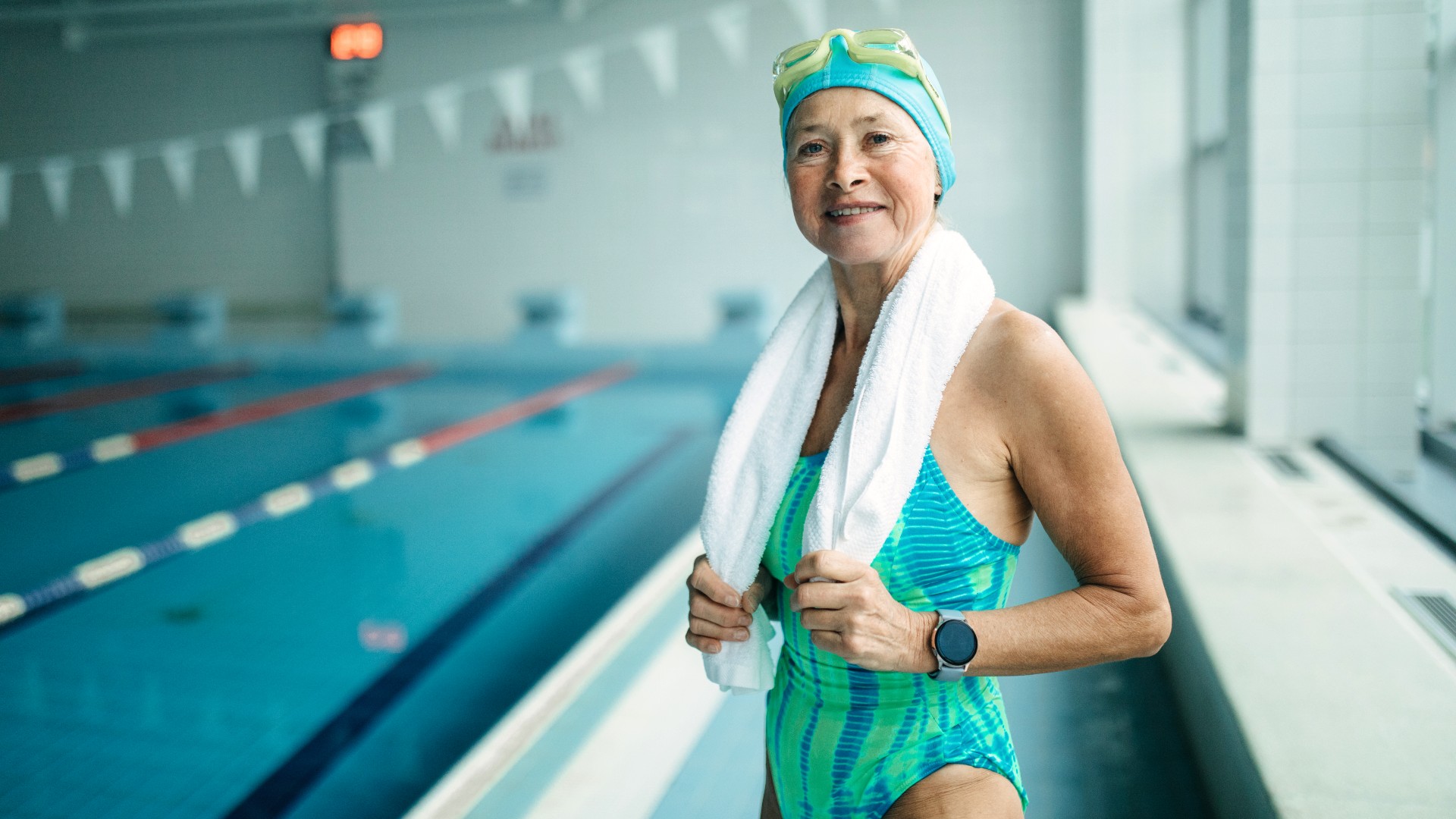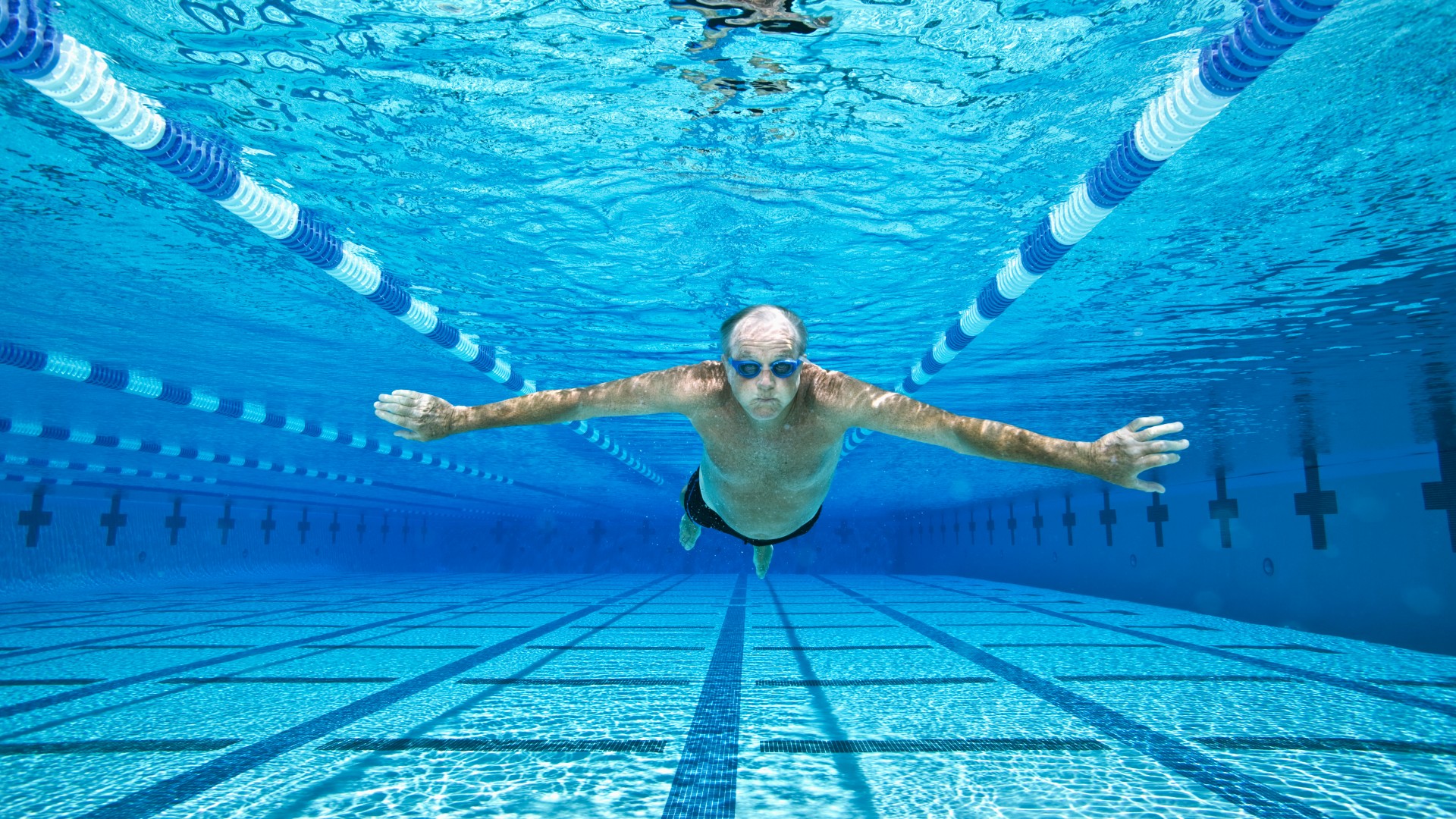Is swimming good for weight loss?
Is swimming good for weight loss? We asked an expert

It’s known for being a great full body, non-weight-bearing exercise, but is swimming good for weight loss? Those of you who love a dip in the water will be glad to hear that depending on the duration and intensity of your workout, swimming can indeed help you to lose weight — if that’s your goal.
According to the Centers for Disease Control and Prevention (CDC), swimming is the fourth most popular recreational activity in the US, with people hitting the water roughly 301 million times annually. And it’s not hard to see why. This low-impact cardiovascular activity that can be performed using various strokes and not only is it beneficial for your mental health and toning the body, but it’s also an efficient way to burn calories, which is required for weight loss.
Whether you prefer breaststroke, front crawl, or heading underwater with the best swim goggles, we’ll look into whether different strokes have an impact on calorie burn, what you can do to make swimming more challenging, and, ultimately, provide deeper insight into how swimming supports weight loss. The best smart scales can also be helpful to track your progress, with high-tech insights into body composition.
Is swimming good for weight loss?
Firstly, let’s look at how weight loss works. Weight loss occurs when a calorie deficit is created within the body. A calorie deficit is when you burn more calories (through physical activity) than you consume to force your body to use its energy stores, such as fat, explains exercise physiologist and health coach Brynn Franklin. This then results in weight loss.
In general, cutting approximately 500 calories a day from your usual diet can result in losing around ½ to 1 pound a week. However, this can vary depending on how much weight you want to lose and your body, gender, and activity level.
Franklin adds: “Swimming is a great option to help stay physically active and burn calories to create a calorie deficit.
An average 160-pound person swimming at a moderate pace for 30 minutes can burn an average of 250 calories. By increasing to a more vigorous pace, that same person may burn up to 440 calories in 30 minutes.”

Brynn Franklin is a certified exercise physiologist and health coach through ACSM and ACE. She is also currently working on becoming a certified nutritionist. She specializes in women’s health and wellness.
When comparing the number of calories burned by other physical activities such as cycling, Franklin explains that it comes down to intensity and duration. “For instance, someone may be an efficient swimmer and can swim at a vigorous pace for 30 minutes, but this same person may find cycling more difficult and cannot cycle at the same vigorous pace.”
Franklin claims butterfly stroke is the most intensive swim stroke as it requires the most muscles and increases the heart rate the most. “Breaststroke comes in second and backstroke third in intensity,” she says.
Overall, swimming is good for weight loss if performed in line with the Physical Activity Guidelines for Americans and alongside a healthy balanced diet.
- Related: Is swimming cardio?
- Related: What's the best swim stroke for burning calories

Does swimming build muscle?
Swimming works almost every single muscle in your body, so when it comes to the question “does swimming build muscle?”, the answer is a resounding yes. “The dominant muscles used are the quadriceps and hamstrings,” says Franklin. “Secondary muscles that are utilized are the back, chest, and arms.”
She adds that swimming builds muscle by working and taxing the muscle fibers being used and can create long, lean muscles throughout the body.
Swimming is also a type of resistance training that helps with this. “The water creates resistance by a phenomenon called drag,” explains Franklin. Drag is the force of the water against your body as you move through it. “Swimming with cupped hands instead of open hands (like a paddle) uses the resistance of drag to propel the body through the water. This resistance strengthens the arms. Kicking your legs is doing double duty; the legs are pushing against the water up and down while kicking, plus propelling the body and pushing against the water in a forward direction. It’s difficult to create resistance in multiple planes of motion in any other cardio exercise.”
How can you make swimming more challenging?
Increasing duration or intensity are two ways to do this. Franklin suggests starting slow, swimming for around 15-20 minutes, and then increasing this to 30-45 minutes. “You can then focus on increasing intensity.
“You can also use swim accessories such as kickboards, leg floats, and pool noodles,” she adds. Franklin shares a couple of water exercises using these.
- Kickboard exercise: She says you can focus on working the legs with this equipment. “Hold the kickboard with your hands and focus on kicking with straight legs for a basic kick. [You can also do] a more complicated kick such as a whip kick or dolphin kick.”
- Leg float exercise: You can use this to focus on arm strength and endurance, Franklin says. “Place a leg float between your knees to help keep the lower body afloat while you work arms doing different strokes.”
Further, water aerobics will help you reap the benefits of water-based exercises if you are unable to or are not comfortable with swimming, adds Franklin. “It's beneficial to anyone, but especially for the elderly, morbidly obese, and people recovering from a lower-body injury due to the no-impact exercises that can be performed.”
Sign up for the Live Science daily newsletter now
Get the world’s most fascinating discoveries delivered straight to your inbox.
Gemma Harris is a UK-based freelance journalist and health writer who blogs at thegutchoice.com. She produces content for multimedia health and lifestyle platforms, including calmmoment.com, StomaTips, Planet Mindful and metro.co.uk because she has a passion for health and wellness. When not writing, she can be found walking or running in nature, at a yoga or spin class, swimming or having cocktails with friends.











